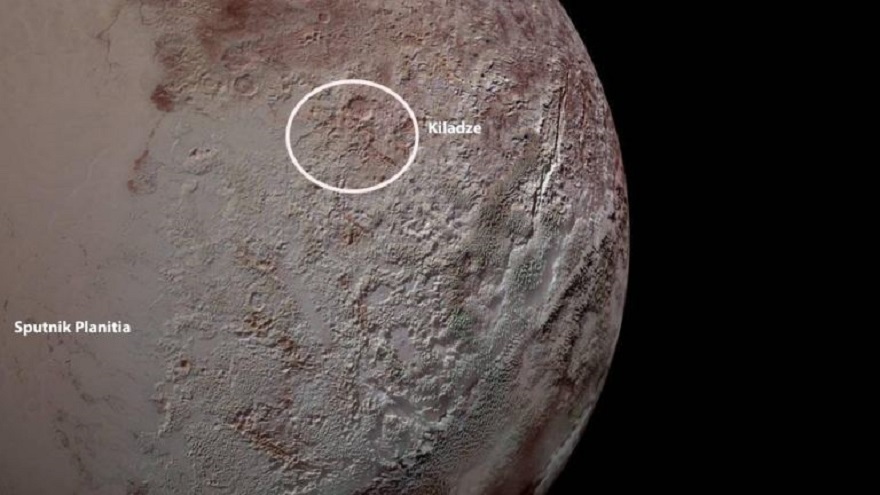Scientists have suggested that the strange Kiladze Crater on the surface of Pluto may be a supervolcano. At the same time, it once spewed not magma but water with various organic impurities, which then froze, forming ice.

Crater on Pluto
Planetary scientist Dale Cruikshank and his colleagues studied the Kiladze Crater on the surface of Pluto and came to the conclusion that it could be a supervolcano. And not like on Earth, but a cryovolcano, so it did not spew magma, but water, which then turned into ice.
The starting point for the scientists’ research was the data collected by the New Horizons spacecraft during its flyby of Pluto in 2015. Then it not only photographed a significant part of the planet’s surface but also determined its chemical composition using a spectrometer.
The 44-kilometer Kiladze Crater looks quite ordinary in those images, but its spectrometry shows something strange. Most of Pluto’s surface consists of methane and nitrogen ice, and there is water here, which is unusual.
Cryovolcanism on Pluto
First, scientists decided to test a much simpler theory: whether Kiladze is an impact crater. However, no evidence of this was found. On the contrary, it is surrounded by faults, and its shape is very irregular. All this looks just like the manifestations of tectonics.
On Earth, volcanoes mostly spew magma, which is molten rocks. Accordingly, supervolcanoes like Phlegrean fields are extremely hot. However, away from the Sun, celestial bodies mostly consist of ice, and not necessarily water. Therefore, cryovolcanoes can be found there.
They have been discovered on many icy moons of giant planets, but none have been seen on Pluto so far. But this does not mean that they are not there. This dwarf planet has a silicate core surrounded by ice. Therefore, if there is still some kind of heating in its depths, then there should be pockets of liquid water that can break through to the surface and form a giant geyser.
Ammonia and organic matter
Interestingly, there is ammonia in the water ice near the Kiladze Crater. This matter is interesting because it can reduce the freezing point of water and allows it to exist in a liquid state even at low temperatures.
Cruikshank noted that ammonia might also be present there in the form of ammonium salts or hydrates. It is not completely clear where this matter comes from. The scientist suggested that it was part of the original mixture of material from which Pluto (and most other bodies in the Solar System) condensed about 4.5 billion years ago.
At the same time, ammonia is a substance that is part of a variety of organic matter. The latter is widely distributed in the vicinity of the Solar System in the form of tholins. However, only the presence of liquid water can create the conditions for the emergence of life.
According to phys.org.
Follow us on Twitter to get the most interesting space news in time
https://twitter.com/ust_magazine
